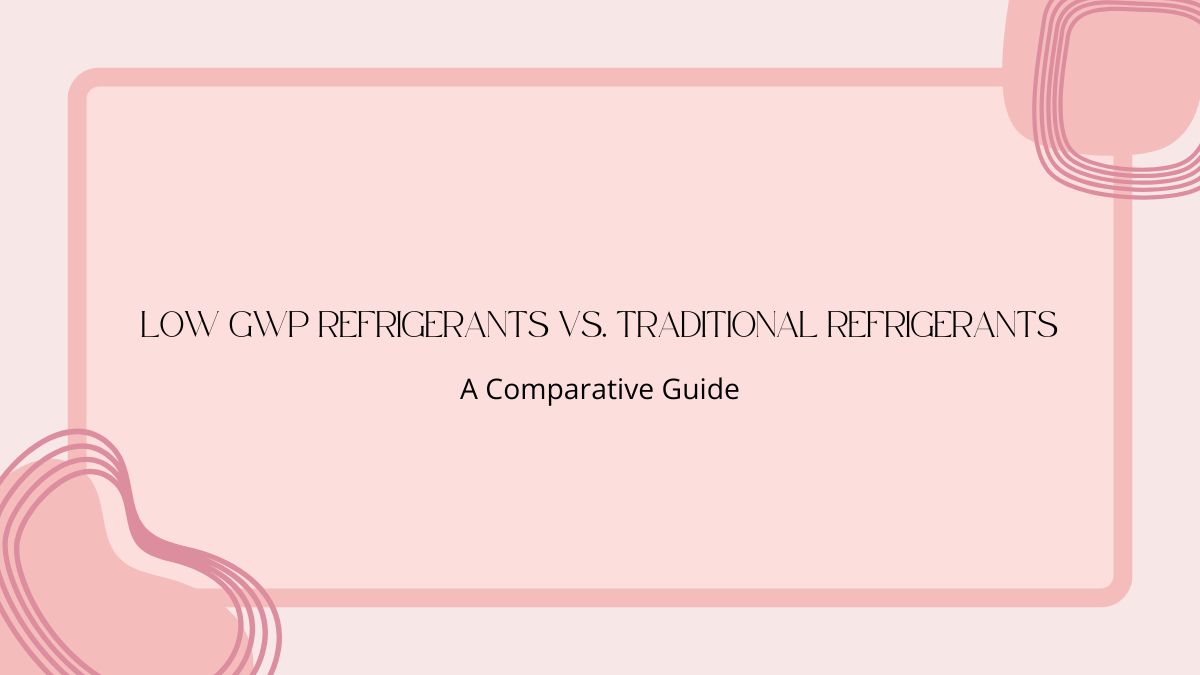As the world faces growing environmental concerns, the need for sustainable solutions has never been more critical. One significant shift in the HVAC and refrigeration industries is the move toward low global warming potential refrigerants. These innovative alternatives offer reduced environmental impact compared to traditional refrigerants, which are known for their higher contributions to greenhouse gas emissions.
In this comparative guide, we’ll explore the key differences between low GWP refrigerants and conventional options, examining their environmental effects, performance, and regulatory standards, helping you make informed decisions for a more eco-friendly future.
Why is it important that the GWP of refrigerant is as low as possible?
The lower the GWP, the less it contributes to global warming. Using refrigerants with minimal GWP helps reduce greenhouse gas emissions, mitigating climate change and aligning with environmental regulations for sustainable practices.
Traditional refrigerants and their impact
Traditional refrigerants, such as chlorofluorocarbons (CFCs), hydrochlorofluorocarbons (HCFCs), and hydrofluorocarbons (HFCs), have been widely used for decades in cooling and refrigeration systems. While they have been effective in delivering the necessary cooling capacity, their environmental impact has raised concerns.
- Ozone depletion potential (ODP): CFCs and HCFCs are notorious for their high ODP, which means they contribute to the depletion of the ozone layer. This led to their phase-out under the Montreal Protocol, a global agreement aimed at protecting the ozone layer.
- Global warming potential (GWP): HFCs, although not harmful to the ozone layer, have high GWP. This means they can trap more heat in the atmosphere compared to carbon dioxide, significantly contributing to climate change. The high GWP of traditional refrigerants has pushed industries to explore alternatives with lower environmental footprints.
- Regulatory pressure: Governments and regulatory bodies around the world have imposed strict regulations to phase out or reduce the use of high-GWP refrigerants. These regulations have spurred the development of alternative options that are more eco-friendly, leading to the rise of next-generation refrigerants.
Introduction to low GWP refrigerants
In response to the environmental damage caused by traditional refrigerants, industries have developed low-GWP refrigerants, which aim to reduce global warming effects without compromising performance.
- HFOs: Hydrofluoroolefins are a newer class of synthetic refrigerants designed to have significantly lower GWP than traditional HFCs. They break down more quickly in the atmosphere, reducing their long-term environmental impact.
- Natural refrigerants: Natural options like ammonia, CO2, and hydrocarbons (propane and isobutane) are gaining traction due to their extremely low GWP. They have been used for years in specific applications and are now being reconsidered for wider use due to their environmental benefits.
Performance comparison
When comparing traditional options with low-GWP alternatives, several performance factors need to be considered:
- Energy efficiency: In terms of energy efficiency, both options can perform effectively, depending on the system and application. However, some natural alternatives, like CO2, can require higher pressure systems, which may affect efficiency. Manufacturers are continually optimizing systems to improve the energy performance of low-GWP options.
- Safety: Traditional options have a long history of use, and their safety risks are well-documented. Low-GWP alternatives, particularly natural ones like ammonia and hydrocarbons, come with certain safety considerations, such as flammability or toxicity, that require careful system design and handling. HFOs, on the other hand, are generally safer but must still be used in compliance with safety regulations.
- Cost: Low-GWP refrigerants tend to have higher upfront costs compared to traditional options. This is partly due to the new technology and system adaptations required for their use. However, these costs are expected to decrease as the demand for eco-friendly refrigerants grows and regulations push for widespread adoption. Over time, energy savings and regulatory compliance may offset these initial costs.
Environmental benefits of low-GWP refrigerants
Their main advantage lies in their reduced impact on global warming. While traditional ones can remain in the atmosphere for years or even decades, contributing to the greenhouse effect, low-GWP options degrade faster, leading to less long-term environmental damage.
- Lower GWP: Their GWP is significantly lower than that of traditional HFCs, meaning they contribute far less to global warming.
- Compliance with regulations: Many countries have adopted stringent regulations to reduce the use of high-GWP refrigerants. Switching to low-GWP alternatives not only helps companies meet these regulations but also positions them as environmentally responsible entities.
Ozone-friendly: Unlike CFCs and HCFCs, they do not deplete the ozone layer. This is a critical advantage, ensuring compliance with both the Montreal Protocol and newer global agreements focused on reducing greenhouse gas emissions.
